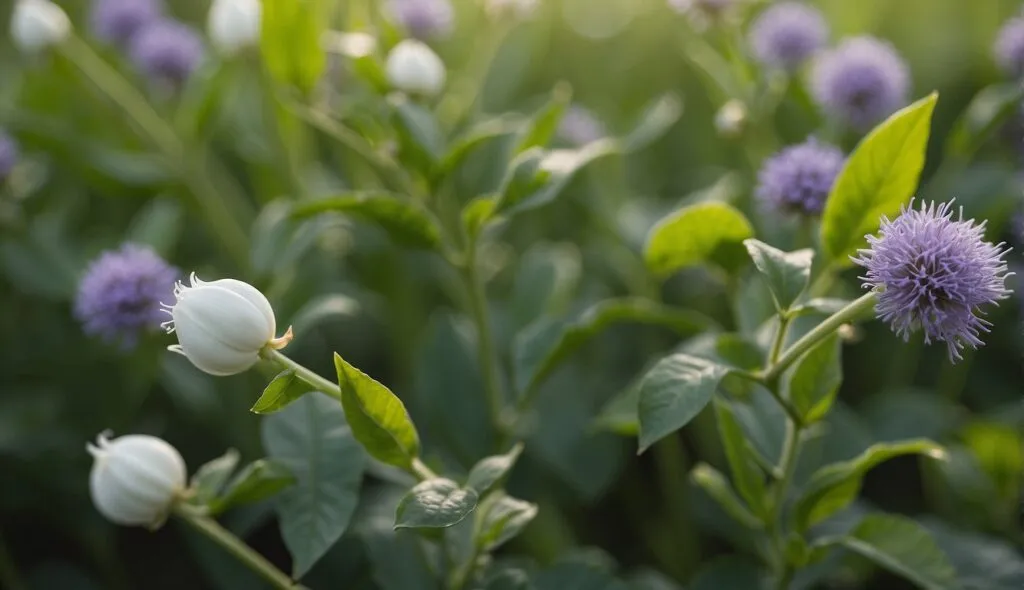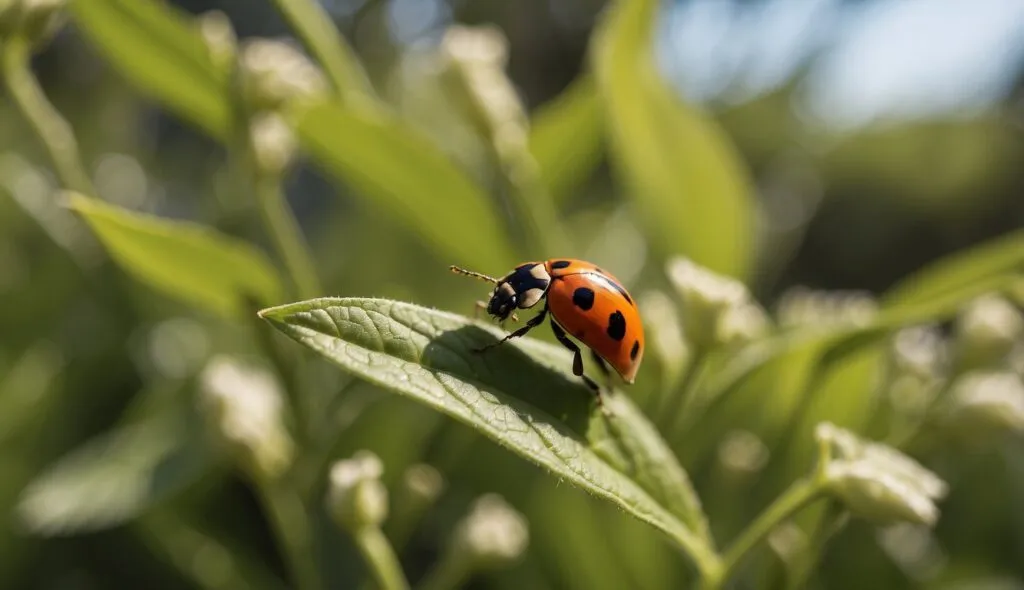Green insect control is a topic that has become increasingly popular in recent years. As people become more aware of the impact that traditional insect control methods can have on the environment, they are seeking out more eco-friendly alternatives. Green insect control is a method of pest management that focuses on using natural, non-toxic products to control and prevent infestations.
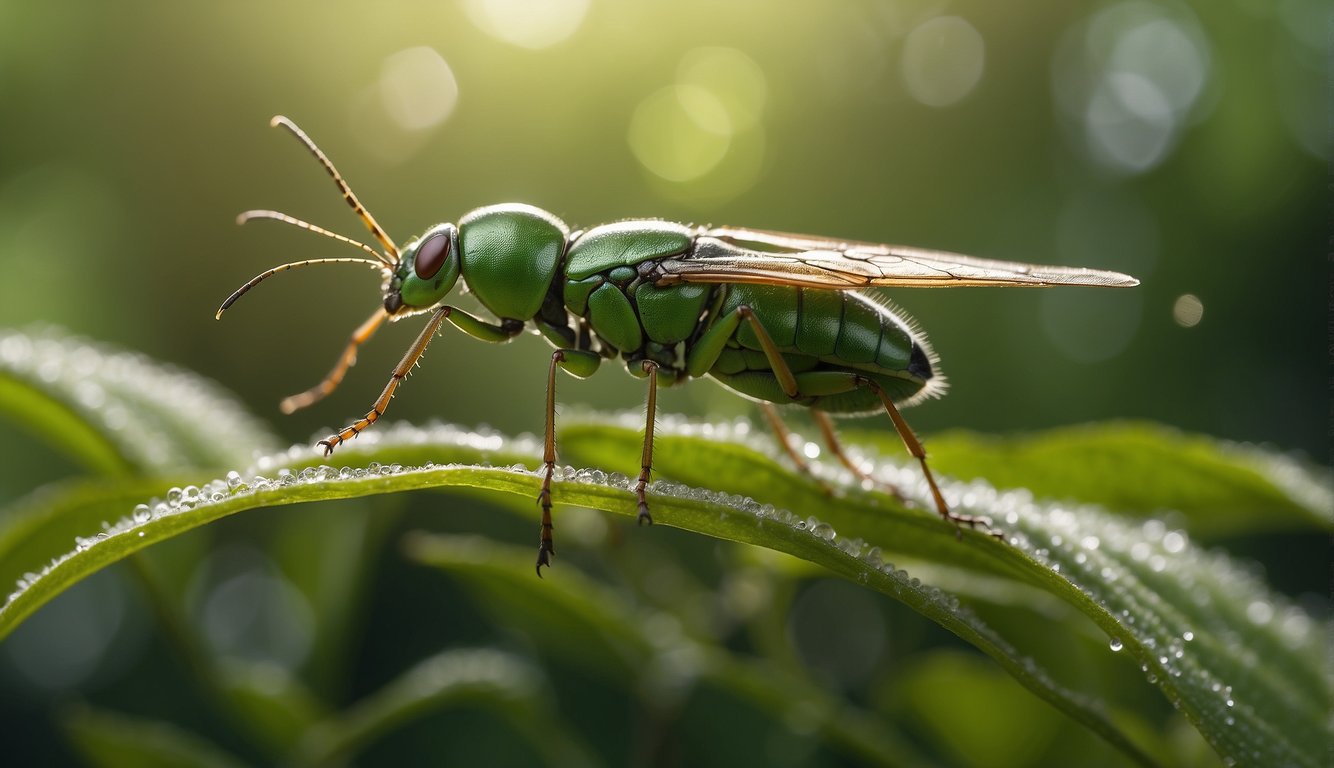
Understanding Lawn Insects and Their Life Cycles is a crucial part of green insect control. By understanding the life cycle of the insects that are common in your area, you can take steps to prevent infestations before they occur. This can include using natural predators or repellents, as well as making changes to your lawn care routine to make it less hospitable to pests. By taking a proactive approach to insect control, you can avoid the need for harsh chemicals and pesticides.
Table of Contents
Key Takeaways
- Green insect control is an eco-friendly alternative to traditional pest management methods.
- Understanding the life cycles of lawn insects is an important part of green insect control.
- By taking a proactive approach to insect control, you can avoid the need for harsh chemicals and pesticides.
Understanding Lawn Insects and Their Life Cycles
As a lawn owner, it is important to understand the life cycles of common lawn insects and how to identify them. In this section, we will discuss identifying common lawn pests, the grub life cycle and damage.
Identifying Common Lawn Pests
There are several types of lawn-damaging pests that you may encounter. Some common pests include ants, chinch bugs, grubs, billbugs, crickets, sod webworms, armyworms, beetles, mole cricket, spiders, mites, mealybugs, millipedes, and mosquitoes. Each of these pests has a unique life cycle and causes different types of damage.
Grub Life Cycle and Damage
Grubs are one of the most common lawn pests and can cause significant damage to your lawn. Grubs are the larvae of beetles and feed on the roots of grass, causing the grass to die. The most common types of grubs are white grubs, which are the larvae of Japanese beetles, and mole crickets.
The grub life cycle begins in mid-summer when adult beetles lay their eggs in the soil. The eggs hatch into small grubs, which begin to feed on the roots of grass. As the grubs grow, they continue to feed on the roots, causing the grass to die. In the fall, the grubs move deeper into the soil to overwinter. In the spring, the grubs move back up to the surface and continue to feed on the roots of grass until they pupate and emerge as adult beetles.
Grub damage can be identified by brown patches of dead grass that easily pull up from the soil. If you suspect a grub problem, you can dig up a section of grass and look for white, C-shaped grubs in the soil. If you find more than five grubs per square foot, you may need to treat your lawn for grubs.
Insects controlled by natural lawn insecticides include surface-feeding insects like chinch bugs and webworms, ticks, and mosquitoes. Natural Grub & Lawn Insect Control kills all stages of the grub life cycle and is safe to use around children and pets. It is recommended to apply from mid-summer to early fall and reapply every 4 to 6 weeks while insects are still active.
Eco-Friendly Lawn Insect Management
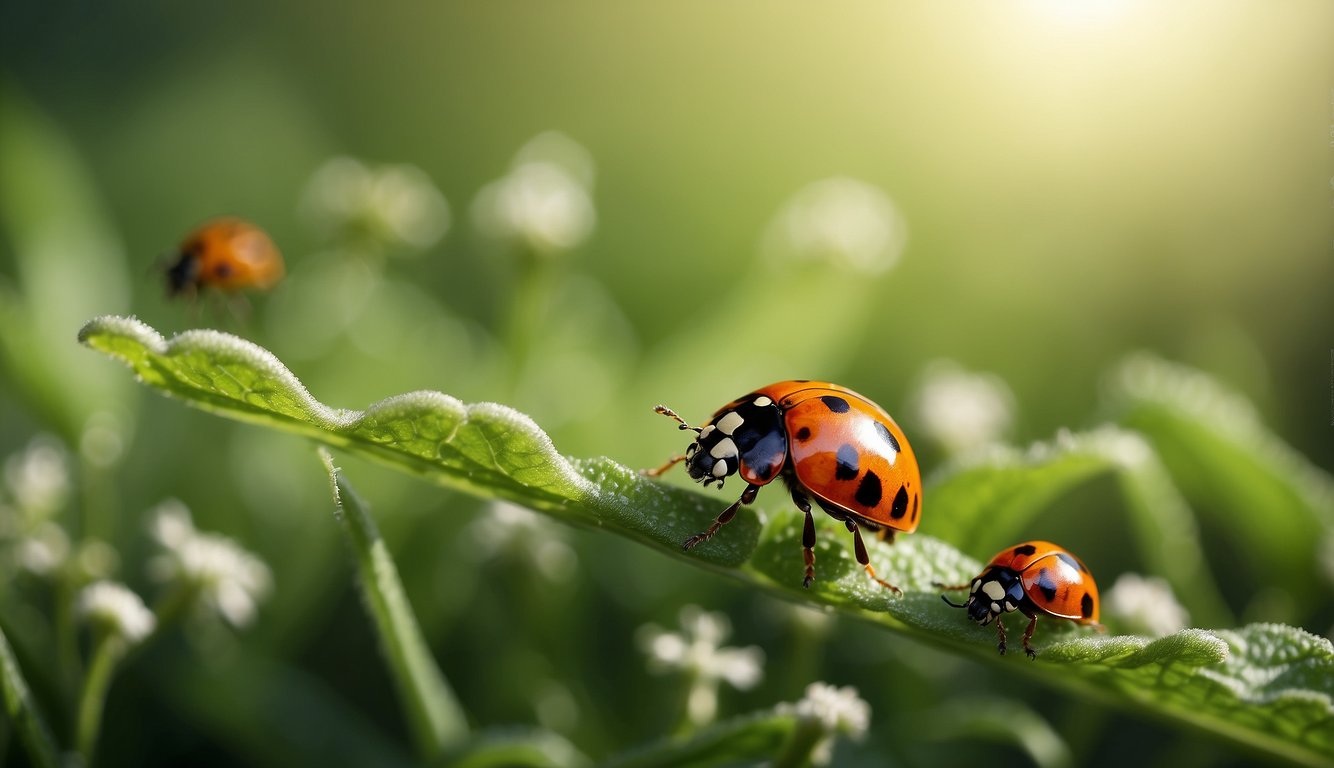
At our company, we prioritize eco-friendly and natural solutions for lawn insect management. By utilizing natural and organic control products, we aim to provide environmentally sound insect control methods that are safe for both your lawn and the ecosystem.
Natural and Organic Solutions
We advocate for the use of plant oils such as rosemary oil, peppermint oil, and geraniol as effective natural grub and lawn insect control remedies. These organic ingredients offer a sustainable and non-toxic approach to pest management, ensuring the health and vitality of your lawn while minimizing harm to beneficial insect populations.
Cultural Practices for Insect Prevention
In addition to utilizing organic pest control products, we recommend implementing cultural practices for insect prevention. Our New American Lawn Plan, available through Jonathan Green Online, emphasizes an organic approach to lawn care, promoting healthy soil and plant growth to naturally deter insects. By avoiding the use of harmful chemicals like neonicotinoids and adopting a holistic approach, we strive to create a green and thriving lawn environment.
Optimal Lawn Care Techniques
At the heart of green insect control is maintaining a healthy lawn. We can achieve this by following best practices for lawn care, including proper watering, mowing, and fertilization. In this section, we will discuss the key techniques for maintaining a healthy lawn.
Best Practices for a Healthy Lawn
Watering: Watering is critical to maintaining a healthy lawn. We recommend watering your lawn deeply and infrequently, rather than frequently and shallowly. This will encourage the roots of the grass to grow deep into the ground, making the lawn more drought-tolerant. Established lawns typically don’t need more than about one inch of water a week, which translates to 20 or 30 minutes per zone, watering once or twice every week. Water in the early morning to avoid excessive evaporation.
Mowing: Mowing is an important aspect of lawn care. We recommend mowing your lawn regularly, but not too short. A general rule of thumb is to never cut more than one-third of the grass blade at a time. This will help keep the lawn healthy and reduce the stress on the grass. Adjust your mower blade to the appropriate height for your lawn type, and make sure your mower blade is sharp to avoid tearing the grass.
Fertilization: Fertilizing your lawn is important to maintain its health and beauty. We recommend using a lawn fertilizer with a spreader to ensure even coverage. For cool-season lawns, fertilize in the fall and spring. For warm-season lawns, fertilize in the late spring and summer. Use a handheld spreader for small lawns or a broadcast spreader for larger lawns. Adjust the spreader settings according to the manufacturer’s instructions.
Seasonal Lawn Maintenance
Reseed: Reseeding is important to maintain a healthy lawn. We recommend reseeding your lawn in the fall, when temperatures are cooler and there is more moisture in the air. Use a high-quality grass seed that is genetically superior to your existing lawn. Follow the manufacturer’s instructions for seeding rates and techniques.
Aerating: Aerating is important to maintain a healthy lawn. We recommend aerating your lawn in the fall or spring, when the grass is actively growing. Use a core aerator to remove small plugs of soil from the lawn. This will help reduce soil compaction and improve water and nutrient penetration.
Soil Amendments: Soil amendments are important to maintain a healthy lawn. We recommend testing your soil every few years to determine its pH and nutrient levels. Use a soil amendment to adjust the pH if necessary, and apply a lawn fertilizer to add nutrients to the soil. Follow the manufacturer’s instructions for application rates and techniques.
By following these best practices for lawn care, we can maintain a healthy lawn that is resistant to insects and disease. Proper watering, mowing, and fertilization are key to green insect control.
Choosing the Right Products for Lawn Insect Control
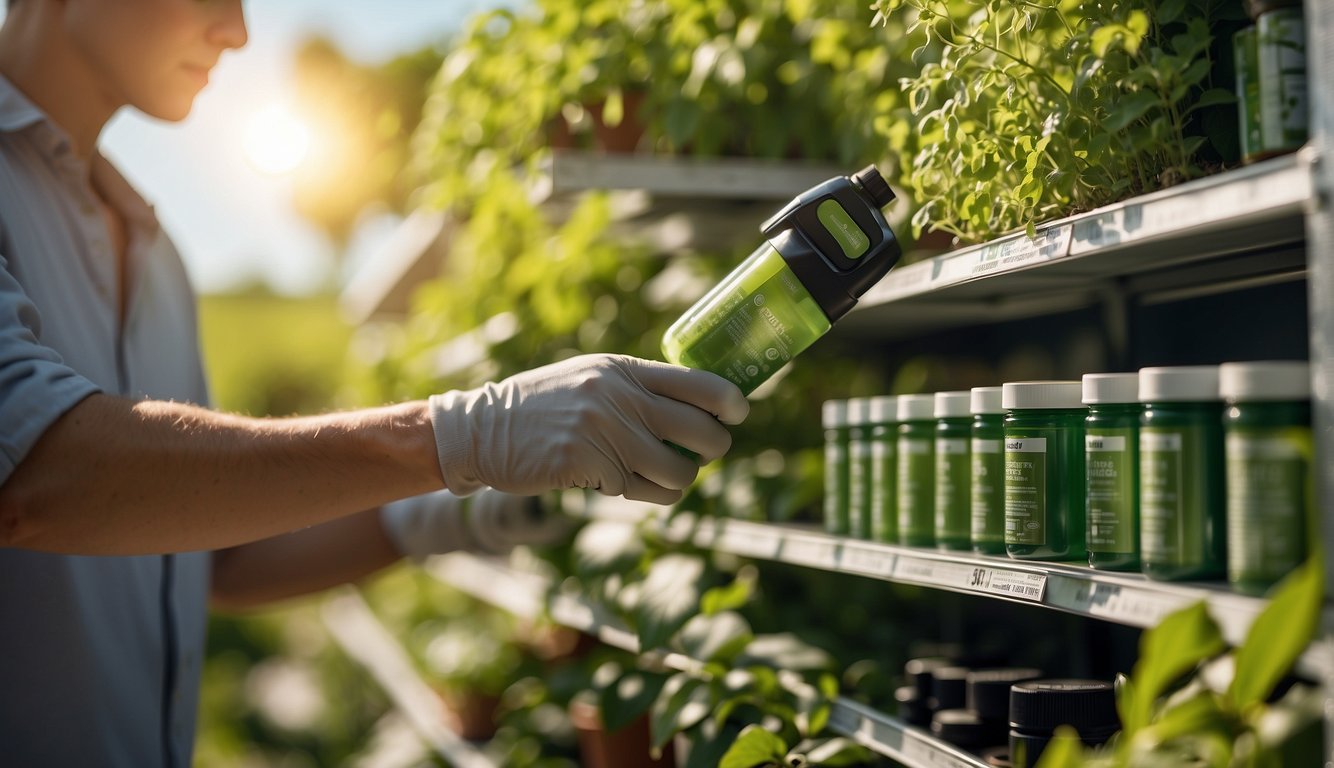
When it comes to selecting the right products for lawn insect control, it’s essential to evaluate various factors to ensure effective and safe pest management.
Evaluating Insecticides and Natural Alternatives
We understand the importance of choosing the right insecticide for your lawn. It’s crucial to consider the safety of the product, especially if you have children or pets. Look for proprietary blends that are safe to use around your family and the environment. Additionally, consider natural alternatives such as beneficial nematodes or botanical insecticides, which can offer effective pest control without the use of harsh chemicals.
Application Tips and Timing
Knowing when and how to apply lawn insect control products is key to their effectiveness. Be sure to follow the product label instructions for proper application. For instance, early fall is an ideal time to apply insecticides for heavy insect infestations. It’s also essential to consider where to apply the product, ensuring coverage for surface and soil insects. When applying, consider using a coverage guide to determine the amount needed for your lawn size.
By evaluating these factors and considering the features of different products, including their effectiveness against lawn grubs, Japanese beetles, and genetically superior grass seed, you can make an informed decision when choosing lawn insect control products. Whether purchasing from an independent home and garden retailer or directly from the manufacturer, understanding how to apply and where to apply the product is crucial for successful pest management.
Maintaining a Lawn Throughout the Seasons
Spring Renewal and Preparation
In the spring, it’s crucial to kickstart the lawn’s growth after the winter months. We recommend aerating the soil to allow nutrients, water, and air to penetrate the roots easily. This helps the grass to grow healthier and stronger. Additionally, overseeding with cool-season grass seed can help fill in any bare patches and promote a lush lawn.
Summer Vigilance and Care
During mid-summer, it’s essential to maintain a consistent watering schedule to keep the lawn hydrated. Mowing the grass at a higher setting can help shade the soil, preventing excessive evaporation. We also suggest keeping an eye out for pests and diseases, as they can quickly spread in warm, humid conditions.
Fall Recovery and Winterization
As the weather cools down in early fall, it’s an ideal time for lawn renovation. This includes overseeding with cool-season grass seed to repair any summer damage. We also recommend aerating the soil to alleviate compaction and improve root growth. Additionally, applying a winterizing fertilizer can help the grass withstand the harsh winter conditions, ensuring a vibrant lawn come spring.
By following these seasonal lawn care tips, we can maintain a healthy and resilient lawn throughout the year.
Frequently Asked Questions
What are the most effective natural ingredients for pest control?
There are several natural ingredients that can be used for pest control. Some of the most effective ones include neem oil, diatomaceous earth, and pyrethrin. Neem oil is a natural insecticide that is derived from the neem tree. It is effective against a wide variety of pests, including aphids, whiteflies, and spider mites. Diatomaceous earth is a powder made from the fossilized remains of diatoms. It works by dehydrating insects and causing them to die. Pyrethrin is a natural insecticide that is derived from chrysanthemum flowers. It is effective against a wide variety of pests, including mosquitoes, flies, and ants.
How do I choose a green pest control product for my home?
When choosing a green pest control product for your home, it is important to look for products that are certified organic. Look for products that are made with natural ingredients and avoid products that contain synthetic chemicals. It is also important to read the label carefully and follow the instructions for use.
What are the benefits of using organic pest control methods?
There are several benefits to using organic pest control methods. Organic pest control methods are safer for the environment and for people and pets. They are also more sustainable than traditional pest control methods, which often rely on synthetic chemicals that can have harmful effects on the environment. Organic pest control methods can also be more effective in the long term, as they can help to build up the natural defenses of plants and soil.
How can I find a reliable organic pest control service nearby?
To find a reliable organic pest control service nearby, you can start by asking for recommendations from friends and family. You can also search online for organic pest control services in your area. Be sure to read reviews and check the company’s credentials before hiring them.
What are the safest pest control options for garden use?
The safest pest control options for garden use are those that are made with natural ingredients. Some examples include neem oil, diatomaceous earth, and pyrethrin. It is important to follow the instructions carefully and to avoid using too much of the product, as this can harm beneficial insects and other organisms in the garden.
How do environmentally friendly pest control methods compare to traditional ones?
Environmentally friendly pest control methods are generally safer and more sustainable than traditional pest control methods. They are also often more effective in the long term, as they can help to build up the natural defenses of plants and soil. However, environmentally friendly pest control methods may require more effort and patience than traditional methods, as they may take longer to work and may require more frequent applications.

